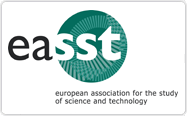Looking for Data in Diabetes Healthcare
Patient 2.0 and the Re-engineering of Clinical Encounters
Abstract
Diabetes is an interesting example of a healthcare sector where patients are responsible for producing and aggregating data about themselves, even if only for reporting details of their consultancies with specialists. This is valuable information because it orients the medical action taken on a specific patient and acts as the basis for aggregate-level investigations, and for new therapies and diagnostic procedures. The reliability, truthfulness, and accuracy of such information is therefore of crucial importance for healthcare practitioners; accordingly, being able to count on ‘empowered’ patients is the best way to obtain reliable, detailed, and updated data. Drawing on the results of a broader research project on diabetes services in Italy, the paper wants to address an essential feature of Patient 2.0: his/her being part of a network of fragmented practices and information and, at the same time, his/her becoming the main point of convergence of clinical information, tools and practices. In doing so, we will underline the re-engineering of clinical encounters and the additional work required to a whole network of actors (doctors, nurses and the patient him/herself) in order to orchestrate data and information.





